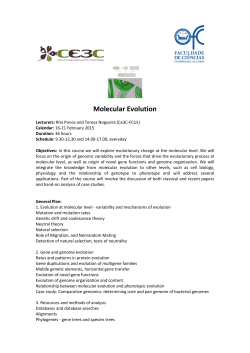
BIOLOGY TEST Senior 5 TEAM B Name
BIOLOGY TEST Senior 5 TEAM B Name………………………………………………………………….. 1) Mark ………….. Which is the correct statement concerning cell and nuclear division? A Haploid eukaryotes can reproduce by mitosis whereas diploid eukaryotes can reproduce by mitosis or meiosis. B Just before prophase, the mass of DNA is double the normal mass. Following anaphase, this mass is reduced by half and following cytokinesis this mass halves again. C Mutagens can cause mutations whereas carcinogens can cause cancer. This means that all mutagens are carcinogenic. D Some of the roles of mitosis are growth, asexual reproduction, cell repair following tissue 2) The photomicrograph shows cells in different stages of mitosis. 5 2 4 In which order do these stages occur? A 3→ 5→ 2→ 1→ 4 B 3→ 5→ 1→ 2→ 4 C 4→ 3→ 5→ 1→ 2 D 4→ 5→ 1→ 2→ 3 1 3) The statements are about genes and proteins involved in breast cancer. • The protein coded by the BRAC1 gene inhibits the growth of breast cancer cells. • The protein coded by the RAD51 gene is required for the repair of damaged DNA. Which combination of genes is most likely to result in breast cancer? A Gene BRAC 1 Normal active gene Gene RAD 51 Normal active gene B Mutated gene Normal active gene C Normal active gene Mutated gene D Mutated gene Mutated gene 4) What explains why organisms use mitosis to produce new cells for growth and repair? A Daughter cells are genetically identical to the parent cell. B Daughter cells are not able to divide again. C Daughter cells have the same genes switched on as the parent cell. D Daughter cells look identical to the parent cell. 5) Which event in the mitotic cell cycle ensures that daughter cells are genetically identical? A A spindle is formed. B DNA replicates to form sister chromatids. C D The centriole replicates. The nuclear envelope disappears. 6) Some events that occur in the mitotic cell cycle are listed. 1 Centrioles begin to move towards opposite poles of the cell. 2 Centrioles produce a spindle. 3 Chromatids are pulled to opposite poles of the cell. 4 Chromosomes line up on the equator of the cell. 5 Chromosomes become longer and thinner. 6 Nuclear envelope and nucleoli disappear. Which row correctly matches one of these events with each stage of mitosis? 7) Which is always true of cytokinesis? 1 Cell organelles replicate. 2 Cell organelles are divided between two cells. 3 Nuclear envelope reforms. A 1, 2 and 3 B 1 and 3 only C 2 only D 3 only
© Copyright 2025





















